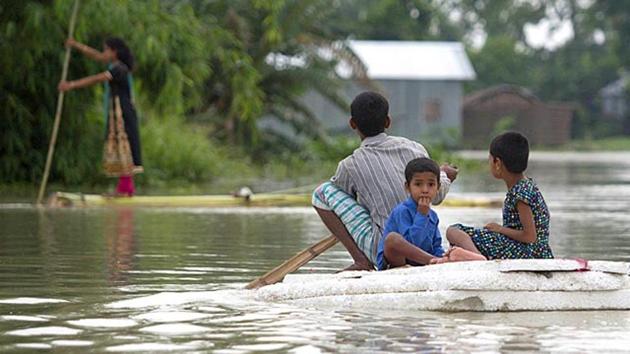In next 25 years river floods to impact six times more Indians
Indians are no strangers to annual floods during monsoons when many rivers burst their banks. But now, a new study has warned that floods may increase exponentially over the next 25 years.
The number of people in India impacted by river flooding may increase by almost six times in the next 25 years if additional adaptation measures are not taken, says a study.

The study published in the Washington-based scientific journal Science Advances this week examined the impact of increased flood risk from extreme rainfall events. These are linked to climate change and the increase in global average temperatures that leads to increasing water evaporation, more retention and transport of water.
“It is important to note that the climate evolution of the next 25 years is already determined by the human carbon emission of the past decades. That is why we know already now that the river flood risk will increase in the next 25 years and that we have to protect against these changes,” Anders Levermann, a climate scientist at the Potsdam Institute for Climate Impact Research in Germany and co-author of the paper said in an email interview. “This is particularly important for India which will face a significant increase in flood risk throughout the country.”
The study examined flooding events in 1971 to 2004, and a future period, 2035 to 2044 and found that there is a strong flood risk 26 of India’s 36 states. Bihar could be one of the worst affected states.
The climate change impacts that the study considers are from emissions that have already taken place.
“In light of possible future flood events, a number of countries with a large population and strong economic performance (for example, India and the United States) require extensive adaptation measures to keep flood risk at its present level,” the study said.
“The reason that is so many people will be impacted because there is more exposure; more people and assets are in the flood zone,” Kamal Kishore, a senior official at the National Disaster Management Authority, said. “2017 was one of the worst flood years in the last 20 years, even though the monsoon was slightly below normal. The same amount of rainfall is happening in fewer days. You are beginning to see a shift in the way that rainfall occurs.”
“Much better land use management happening, modernisation of flood control structures and systemization of flood management information system, will contribute to resilience,” Kishore added.
The research assumes a fixed population and distribution. A surprising finding of the work was that developed countries may need the same if not more intense adaptation efforts to maintain the same level of flood protection.
“One important outcome is that in order to keep the protection level in the next 25 years the same as it was in the past 25 years the US and Northern Europe requires as much adaptation effort as does India and Indonesia,” Levermann said.
The National Disaster Management Authority is hosting a two-day workshop in Delhi next week to promote cooperation among nations - including developing and developed countries - to build disaster resilient infrastructure as mandated by the Sendai framework, a 15 -year voluntary agreement of which India is a part.





